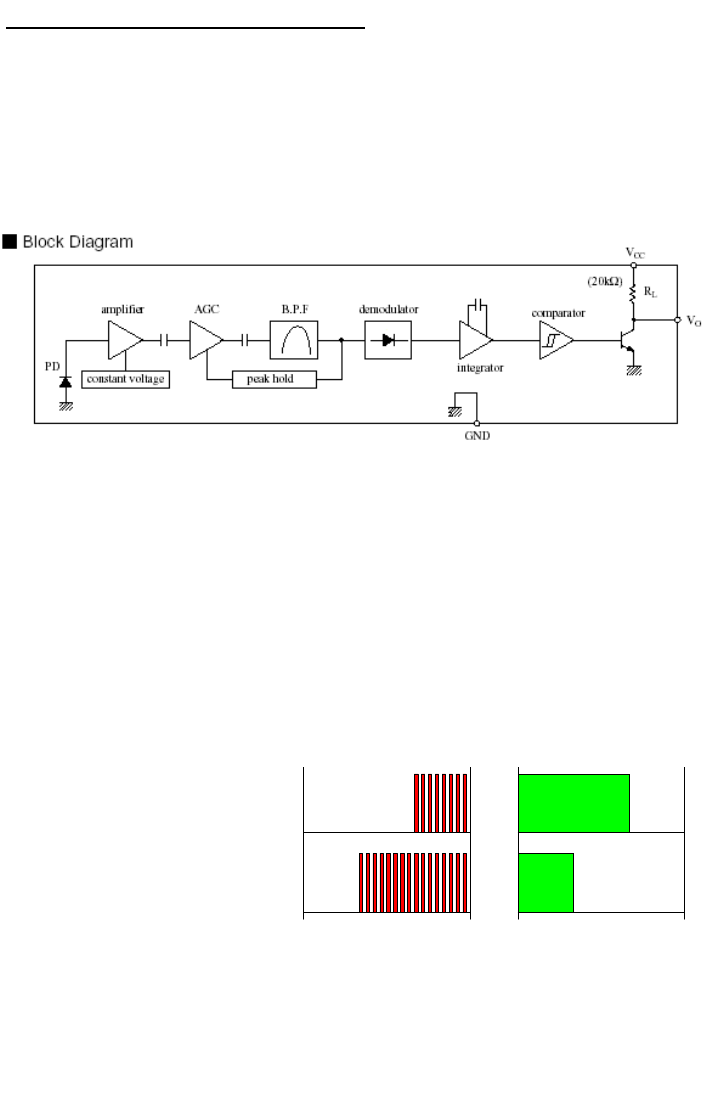
RRW1A • 5
RRW1 PAIR THEORY OF OPERATION
The RRW1A (transmitter board) may look quite simple but there is actually
quite a lot being done inside each one of the parts. Many individual compo-
nents are packed inside of the IR receiver part (U2) itself; so many in fact that
if it was built up with discrete components, it would never fit in this little kit
case. Inside of the part there is an IR detector diode, amplifier, AGC circuit,
bandpass filter, a peak-hold circuit, an integrator, comparators, and an output
amplifier. Heck, the part is a kit in itself! Just be glad it’s all in one nice module
and ready to go.
IR remote controls send out their data on a 38 kHz carrier much like the way
your FM radio does. By modulating the carrier signal with the data you want to
send, it is possible to increase the range of the transmission and decrease in-
terference from other IR sources like ambient light (the sun pumps out lots of
IR!!!). The modulation style used with remotes is called OOK (on off keying).
In a nut shell, OOK modulation means the IR LED is switched on and off at a
rate of 38 kHz in order to send the needed data. The digital data being sent
(ones and zeros) is composed of a certain duration pulse for a one and a dif-
ferent duration pulse for a zero. There are pauses with no carrier in-between
each one and zero data bit being sent for easy determination of the bit
boundaries. A common format for this type of data transmission is called
60/30 PWM. While this may sound complex, it really is not. Let’s take a closer
look.
PWM stands for Pulse-Width-
Modulation, meaning we
change the on-time of the LED
within a certain amount of time.
If we send data at a rate of 1
bit per second (bps), each bit
would take up a second of
sending time. To represent a 1,
the LED may be switched on
and off at 38 kHz for 60% of
the one second time frame (0.60 sec.) of it. For a 0, the LED will be switched
on and off at 38 kHz for 30% of the time (0.30 sec.) of the entire second.
0
1
0Sec 1Sec
0
1
0Sec 1Sec
IR Remote
Output
IR Detector
Output


















